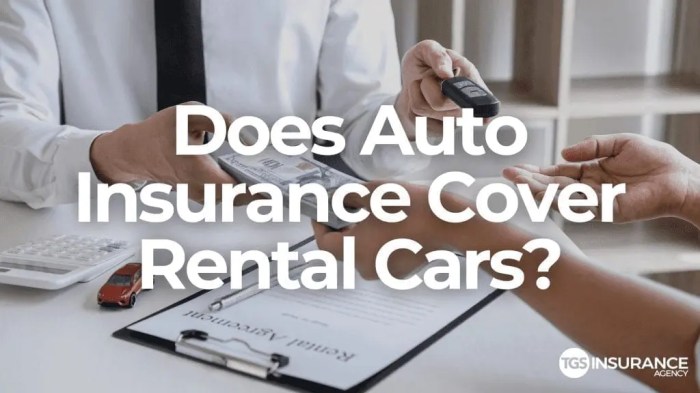What is the difference between auto and home insurance? It’s a question many people ask, especially when they’re first starting out on their own. While both types of insurance protect you from financial losses, they cover very different things.
Auto insurance protects you from financial responsibility if you cause an accident, while home insurance protects your property from damage or theft. But there’s a lot more to it than that, and understanding the differences can help you choose the right coverage for your needs.
Think about it this way: Your car is a mobile asset that can cause damage to other vehicles or property. Your home, on the other hand, is a fixed asset that can be damaged by natural disasters, fires, or even theft.
Both types of insurance are designed to help you recover from these types of losses, but the specific coverage they offer is different.
Introduction

Auto and home insurance are two common types of insurance that protect you financially in case of unexpected events. Auto insurance covers your vehicle and related liabilities, while home insurance protects your dwelling and its contents. Both types of insurance work on the principle of risk pooling, where a group of individuals pay premiums to a company that then covers the costs of losses incurred by members of that group.
Purpose of Auto and Home Insurance
Auto insurance primarily aims to protect you financially from losses arising from accidents involving your vehicle. It covers damage to your car, injuries to you or others, and legal liabilities. Home insurance, on the other hand, safeguards your home and its contents from damage caused by events like fire, theft, or natural disasters.
Basic Concepts of Insurance Coverage
Insurance coverage is the extent to which your insurance policy protects you against financial losses. It’s essential to understand the different types of coverage available and their limits.
Types of Coverage
- Liability coverage: This covers the costs of injuries or damages you cause to others in an accident. It’s typically required by law.
- Collision coverage: This pays for repairs or replacement of your vehicle if it’s damaged in an accident, regardless of fault.
- Comprehensive coverage: This covers damage to your vehicle from non-accident events like theft, vandalism, or natural disasters.
- Medical payments coverage: This pays for medical expenses for you and your passengers, regardless of fault, after an accident.
- Uninsured/underinsured motorist coverage: This protects you if you’re hit by a driver who doesn’t have insurance or doesn’t have enough insurance to cover your losses.
- Personal property coverage: This covers your belongings in your home, such as furniture, electronics, and clothing, against damage or theft.
- Liability coverage: This protects you from financial losses if someone is injured on your property or if you are held liable for their injuries.
Limits and Deductibles
- Limits: The maximum amount your insurance company will pay for a covered loss. These limits are specified in your policy.
- Deductibles: The amount you pay out-of-pocket before your insurance coverage kicks in. A higher deductible typically means a lower premium.
Factors Affecting Premiums
- Driving history: A clean driving record with no accidents or violations usually results in lower premiums.
- Age and gender: Younger drivers and males tend to have higher premiums due to higher risk factors.
- Vehicle type: The make, model, and year of your vehicle can influence your premiums.
- Location: Premiums can vary based on the risk of accidents and crime in your area.
- Credit score: In some states, your credit score can be used to determine your insurance premiums.
It’s important to carefully review your insurance policy and understand the coverage, limits, and deductibles before you purchase it.
Coverage Differences

Auto and home insurance policies cover different types of risks, so the coverage they offer is quite different. They both protect you against financial losses, but they focus on distinct aspects of your life.
Liability Coverage
Liability coverage is a crucial part of both auto and home insurance. It protects you financially if you are found legally responsible for causing injury or damage to others.
- Auto insurance:Liability coverage in auto insurance pays for medical expenses, lost wages, and property damage caused by an accident you were at fault for. This coverage usually has two limits: per person and per accident. For example, a policy might have a limit of $100,000 per person and $300,000 per accident.
- Home insurance:Liability coverage in home insurance protects you against claims from guests or others who are injured on your property. For example, if someone slips and falls on your icy sidewalk, your home insurance will cover their medical expenses. This coverage typically has a single limit, like $100,000.
Property Damage Coverage
Property damage coverage protects you against financial losses related to damage to your own property.
- Auto insurance:Collision and comprehensive coverage are the two main types of property damage coverage in auto insurance. Collision coverage pays for repairs to your car if you are involved in an accident, regardless of fault. Comprehensive coverage covers damage to your car from events like theft, vandalism, and natural disasters.
- Home insurance:This coverage protects your home and its contents from damage caused by events like fire, theft, and storms. It also covers the cost of temporary living expenses if your home becomes uninhabitable due to a covered event. The amount of coverage you need depends on the value of your home and belongings.
Personal Injury Coverage
Personal injury coverage protects you from financial losses related to injuries you sustain in an accident.
- Auto insurance:Personal injury protection (PIP) coverage pays for medical expenses, lost wages, and other expenses related to injuries you sustain in an accident, regardless of fault.
- Home insurance:Home insurance does not typically offer personal injury coverage, but you can purchase supplemental coverage if you wish.
Coverage Limits and Deductibles
Coverage limits and deductibles are important aspects of both auto and home insurance policies.
- Coverage limits:These are the maximum amounts your insurance company will pay for covered losses. Coverage limits can vary widely depending on your policy and the type of coverage.
- Deductibles:This is the amount you pay out-of-pocket before your insurance company starts covering your losses. Higher deductibles usually mean lower premiums, but you will have to pay more in the event of a claim.
Risk Factors
Insurance companies consider various risk factors to determine your premiums. These factors reflect the likelihood of you filing a claim, which ultimately influences the cost of your coverage.
Driving History
Your driving history significantly impacts your auto insurance premiums. A clean driving record with no accidents or violations typically results in lower premiums. Conversely, a history of accidents, speeding tickets, or DUI convictions increases your risk profile, leading to higher premiums.
For example, a driver with multiple accidents might face a 20-30% increase in their auto insurance premium compared to a driver with a clean record.
Location
The location where you live or drive also influences your auto and home insurance premiums. Areas with higher crime rates, traffic congestion, or a greater frequency of natural disasters often have higher premiums. For example, a driver living in a city with a high rate of car theft may face higher premiums than a driver in a rural area with lower crime rates.
Home Value
The value of your home is a primary factor in determining your home insurance premiums. The higher the value of your home, the more it will cost to rebuild or repair it in case of damage or loss. This means you’ll likely pay higher premiums for comprehensive coverage.
For example, a homeowner with a $500,000 home will typically pay higher premiums than a homeowner with a $250,000 home.
Accidents
Accidents, whether car accidents or home incidents, increase your risk profile and can lead to higher premiums. Insurance companies consider the frequency and severity of accidents when calculating your rates. For example, a homeowner who has experienced multiple water damage claims may face higher premiums for water damage coverage.
Natural Disasters
Living in an area prone to natural disasters, such as earthquakes, hurricanes, or floods, can significantly impact your insurance premiums. Insurance companies assess the risk of natural disasters in your region and adjust premiums accordingly. For instance, a homeowner living in a hurricane-prone area may face higher premiums for windstorm coverage.
Theft
The risk of theft, whether for your car or your home, influences your insurance premiums. Areas with high crime rates, particularly for auto theft or burglary, typically have higher insurance premiums. For example, a homeowner in a neighborhood with a high rate of burglaries may face higher premiums for theft coverage.
Policy Structure
Both auto and home insurance policies are structured similarly, with a focus on outlining coverage details, exclusions, and procedures for making claims. While the specific wording may vary, the fundamental elements are consistent across most policies.
Policy Terms
Policy terms are the specific conditions and agreements that define the coverage provided by the insurance policy. They typically include:
- Policy Period:The time frame during which the policy is active and provides coverage.
- Deductible:The amount you pay out of pocket before the insurance company covers the rest of the claim.
- Premium:The amount you pay to the insurance company for coverage.
- Coverage Limits:The maximum amount the insurance company will pay for a specific claim.
- Insured Parties:The individuals or entities covered by the policy.
- Named Perils:Specific events or occurrences that are covered by the policy, such as fire, theft, or vandalism.
Exclusions, What is the difference between auto and home insurance?
Exclusions are situations or events that are not covered by the policy. These are typically listed in the policy document and may include:
- Acts of War:Damage caused by war or military action is generally not covered.
- Intentional Acts:If you intentionally damage your property or cause an accident, you may not be covered.
- Certain Types of Property:Some items, like valuable collectibles, may require specific endorsements for coverage.
- Natural Disasters:Some policies may exclude coverage for certain natural disasters, such as earthquakes or floods.
Endorsements
Endorsements are add-ons to your policy that provide additional coverage or modify existing coverage. They can be used to:
- Increase Coverage Limits:If you need more coverage for a specific event, such as a higher liability limit for your car insurance.
- Add Coverage for Specific Items:You can add coverage for valuable items like jewelry or art.
- Modify Existing Coverage:You can make changes to your policy, such as adding a driver to your car insurance or changing your deductible.
Obtaining Quotes and Making Claims
- Obtaining Quotes:To get quotes for auto and home insurance, you’ll need to provide information about your vehicle, home, and driving history. You can contact insurance companies directly, use online comparison tools, or work with an insurance broker.
- Making Claims:When you need to file a claim, you’ll need to contact your insurance company and provide details about the incident. The company will then investigate the claim and determine if it’s covered under your policy. If the claim is approved, the insurance company will pay for the covered expenses, minus your deductible.
Cost Considerations: What Is The Difference Between Auto And Home Insurance?

The cost of auto and home insurance is influenced by a variety of factors, making it essential to understand the components that determine your premiums. Your coverage levels, deductibles, and risk factors all play a significant role in shaping your insurance costs.
Coverage Levels
Your coverage levels directly impact your insurance premiums. Higher coverage levels generally mean higher premiums. For example, if you choose comprehensive and collision coverage for your car, you’ll pay more than if you only have liability coverage. Similarly, having higher limits for liability coverage on your home insurance policy will result in higher premiums.
Deductibles
Your deductible is the amount you pay out of pocket before your insurance kicks in. A higher deductible generally means lower premiums, as you’re essentially taking on more of the financial risk. Conversely, a lower deductible means higher premiums.
Risk Factors
Several risk factors can influence your insurance premiums. These factors are specific to each type of insurance:
Auto Insurance
- Driving history:Your driving record, including accidents, speeding tickets, and other violations, can significantly impact your premiums. A clean driving record generally results in lower premiums.
- Age and experience:Younger drivers with less experience tend to have higher premiums due to their higher risk of accidents.
- Vehicle type:The make, model, and year of your vehicle can influence your premiums. Luxury cars and high-performance vehicles typically have higher premiums due to their higher repair costs.
- Location:Your location can affect your premiums due to factors such as traffic density, crime rates, and weather conditions. Areas with higher traffic congestion and more accidents may have higher premiums.
- Credit score:In some states, insurance companies may consider your credit score when determining your premiums. A good credit score can potentially lead to lower premiums.
Home Insurance
- Home value:The value of your home is a primary factor in determining your premiums. Higher home values generally mean higher premiums.
- Location:Similar to auto insurance, your location can affect your premiums due to factors such as crime rates, natural disaster risks, and the cost of rebuilding. Areas prone to earthquakes, hurricanes, or wildfires may have higher premiums.
- Home features:Features like security systems, fire alarms, and sprinkler systems can lower your premiums as they reduce the risk of damage.
- Age and condition of your home:Older homes may have higher premiums due to potential issues with outdated plumbing, electrical wiring, or other systems. Well-maintained homes typically have lower premiums.
Potential Premium Reductions
There are several ways to potentially reduce your insurance premiums:
- Shop around for quotes:Compare quotes from different insurance companies to find the best rates.
- Increase your deductible:A higher deductible can result in lower premiums, but make sure you can afford to pay the deductible if you need to file a claim.
- Improve your driving record:Avoid traffic violations and accidents to maintain a clean driving record and potentially lower your auto insurance premiums.
- Bundle your policies:Bundling your auto and home insurance with the same company can often result in discounts.
- Ask about discounts:Insurance companies offer various discounts, such as good student discounts, safe driver discounts, and multi-car discounts. Inquire about available discounts to see if you qualify.
- Consider safety features:Installing safety features in your home, such as security systems, fire alarms, and sprinkler systems, can lower your home insurance premiums.
- Maintain your home:Regular maintenance and repairs can help prevent damage and potentially lower your premiums.
Closing Summary

In the end, choosing the right auto and home insurance coverage comes down to understanding your individual needs and risks. It’s important to carefully consider your driving history, location, the value of your home, and your personal risk tolerance.
By taking the time to compare quotes and ask questions, you can ensure you have the right coverage at the right price. And remember, even though insurance can seem complicated, it’s a valuable tool that can protect you from financial ruin in the event of an unexpected event.
Frequently Asked Questions
How do I know how much coverage I need?
The amount of coverage you need depends on your individual circumstances. For auto insurance, you’ll need enough liability coverage to protect you in case you cause an accident. For home insurance, you’ll need enough coverage to rebuild your home in case of a total loss.
It’s a good idea to talk to an insurance agent to get personalized advice.
What is a deductible?
A deductible is the amount of money you pay out of pocket before your insurance company starts paying for a claim. The higher your deductible, the lower your monthly premiums will be. However, you’ll have to pay more if you have to file a claim.
What are some ways to save money on insurance?
There are a few things you can do to save money on your insurance premiums. You can get good grades in school, take a defensive driving course, install security systems in your home, and bundle your auto and home insurance policies together.
